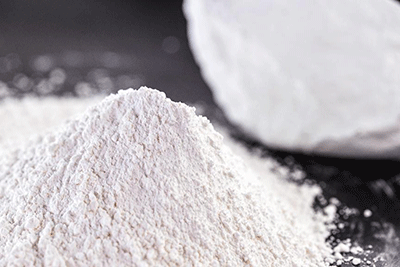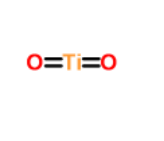


| Item | Index |
|---|---|
| Appearance | White powder |
| TiO2 content | 85.0% |
| Tinting reducing power | 1800 |
| PH | 6.0-9.0 |
| Moisture | ≤0.6% |
| Residue on 45μm | 0.02% |
| Resistivity of water extraction | ≥60Ω |
| Oil absorption | ≤25.0g/100g |
| Packing | In 25KG /500KG /1000KG bag or as per customer’s requirement |
|---|---|
| Storage | This product should not be stored outside or exposed to temperature extremes or to moisture.
To ensure optimum performance, it is recommended that the product is used on a first in, first out basis from receipt of shipment. |
Tel: 0086-25-52397808
E-mail: info@titanium-dioxide.net


| Common Names | TITANIUM DIOXIDE | ||
|---|---|---|---|
| Structure |

|
||
| CAS No. | 13463-67-7 | Boiling Point (℃) | 2900 |
| Molecular Weight | 79.866 | Melting Point (℃) | 1840 |
| Appearance | white powder | Bulk density | 3.84 |
| HS Code | 3206111000 | Flash Point (℃) | 2500-3000 |
| Safety Phrases | S2;S25;S26;S36;S36/S37 | ||
|---|---|---|---|
| RIDADR | No hazardous good according to the regulation. | ||
| WGK Germany | NONE | ||
| Packaging Group | NONE | ||
| Hazard Class | NONE | ||
| SYMPTOMS | PREVENTION | FIRST AID | |
| Inhalation | Cough. Sore throat. Redness. Burning sensation. Itching. | Use local exhaust or breathing protection. | Fresh air, rest. |
| Eyes | Redness. Pain. | Protective gloves. | Rinse opened eye for several minutes under running water. Then consult a doctor. |
| Ingestion | Abdominal pain. Nausea. Vomiting. | Do not eat, drink, or smoke during work. Wash hands before eating. | Rinse mouth. Induce vomiting (ONLY IN CONSCIOUS PERSONS!). Refer for medical attention . |
R5577 Titanium Dioxide Pigment
R5577 is a specific type of rutile titanium dioxide pigment, which is commonly used in various applications due to its unique properties. Here's a breakdown of some key aspects:
1. Rutile Titanium Dioxide: Titanium dioxide (TiO2) exists in two main crystal forms: rutile and anatase. Rutile is known for its high refractive index, excellent opacity, and UV absorbing properties, making it a popular choice for a wide range of applications.
2. Sulfuric Acid Process: The production of R5577 involves the sulfuric acid process. This method is a common way to manufacture titanium dioxide. It typically starts with the extraction of titanium ore (usually ilmenite or rutile) and then undergoes a series of chemical reactions using sulfuric acid to convert the raw material into titanium dioxide pigment.
3. Dense Silica and Alumina: During the manufacturing process, dense silica and alumina are used as additives. These components can help improve the particle size distribution and overall performance of the pigment.
4. Special Organic Surface Treatment: To enhance the properties and performance of the pigment, R5577 undergoes a special organic surface treatment. This treatment can modify the surface characteristics of the particles, making them more compatible with various matrices in which the pigment will be used.
Applications of R5577:
Rutile titanium dioxide pigments, including R5577, find application in various industries, including:
1. Paints and Coatings: R5577 is used in paints and coatings to provide opacity, brightness, and color stability.
2. Plastics: It is utilized in plastic products to impart whiteness, opacity, and UV protection.
3. Inks: R5577 is employed in printing inks, especially in high-quality and UV-curable inks.
4. Paper: It is used in the paper industry to enhance brightness and opacity.
5. Cosmetics: Rutile titanium dioxide can be found in cosmetic products like sunscreen, foundation, and lotions due to its UV-absorbing properties.